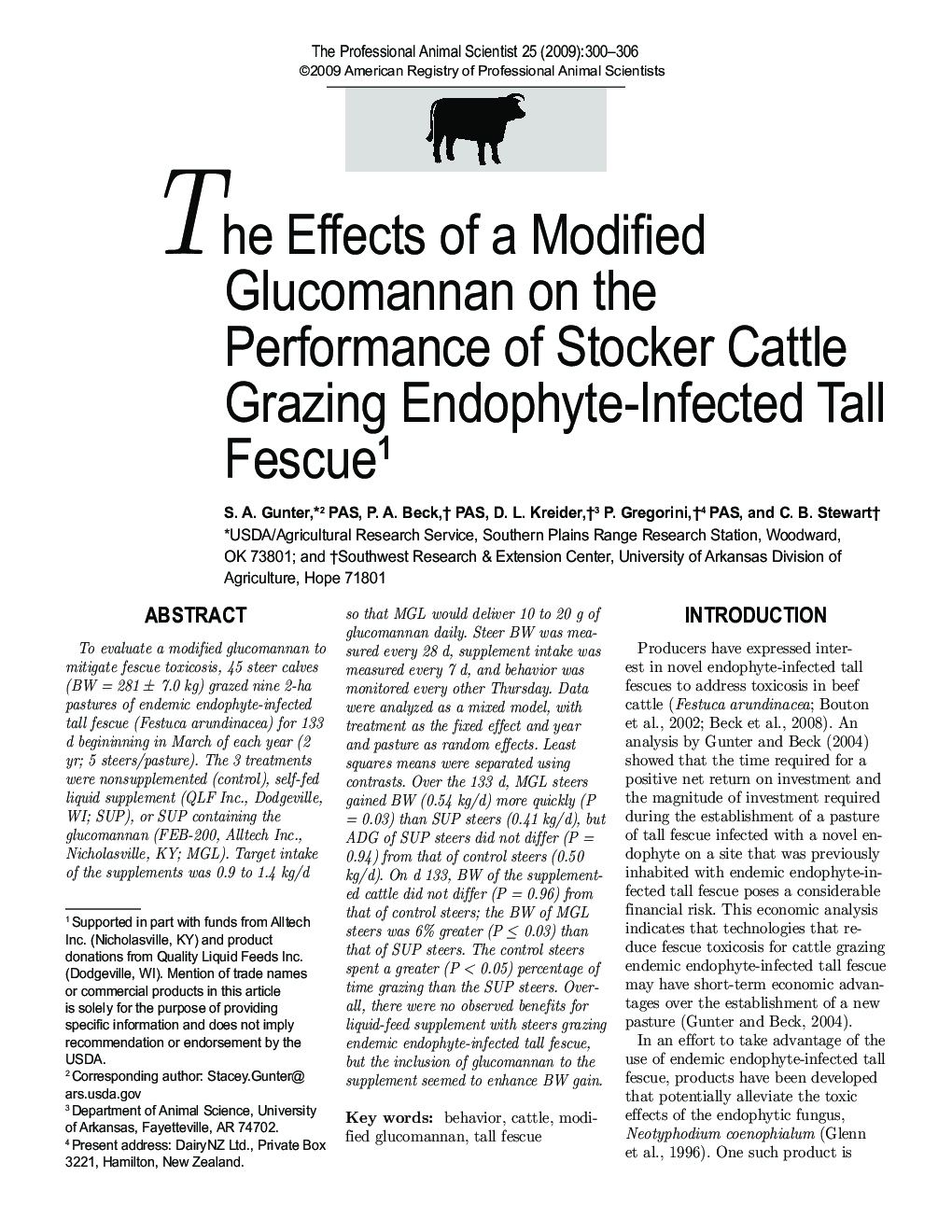| Article ID | Journal | Published Year | Pages | File Type |
|---|---|---|---|---|
| 2454386 | The Professional Animal Scientist | 2009 | 7 Pages |
Abstract
To evaluate a modified glucomannan to mitigate fescue toxicosis, 45 steer calves (BW = 281 ± 7.0 kg) grazed nine 2-ha pastures of endemic endophyte-infected tall fescue (Festuca arundinacea) for 133 d begininning in March of each year (2 yr; 5 steers/pasture). The 3 treatments were nonsupplemented (control), self-fed liquid supplement (QLF Inc., Dodgeville, WI; SUP), or SUP containing the glucomannan (FEB-200, Alltech Inc., Nicholasville, KY; MGL). Target intake of the supplements was 0.9 to 1.4 kg/d so that MGL would deliver 10 to 20 g of glucomannan daily. Steer BW was measured every 28 d, supplement intake was measured every 7 d, and behavior was monitored every other Thursday. Data were analyzed as a mixed model, with treatment as the fixed effect and year and pasture as random effects. Least squares means were separated using contrasts. Over the 133 d, MGL steers gained BW (0.54 kg/d) more quickly (P = 0.03) than SUP steers (0.41 kg/d), but ADG of SUP steers did not differ (P = 0.94) from that of control steers (0.50 kg/d). On d 133, BW of the supplemented cattle did not differ (P = 0.96) from that of control steers; the BW of MGL steers was 6% greater (P ⤠0.03) than that of SUP steers. The control steers spent a greater (P < 0.05) percentage of time grazing than the SUP steers. Overall, there were no observed benefits for liquid-feed supplement with steers grazing endemic endophyte-infected tall fescue, but the inclusion of glucomannan to the supplement seemed to enhance BW gain.
Keywords
Related Topics
Life Sciences
Agricultural and Biological Sciences
Animal Science and Zoology
Authors
S.A. PAS, P.A. PAS, D.L. Kreider, P. PAS, C.B. Stewart,
